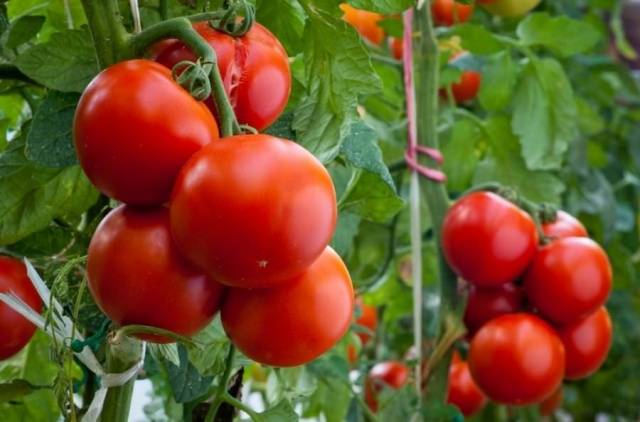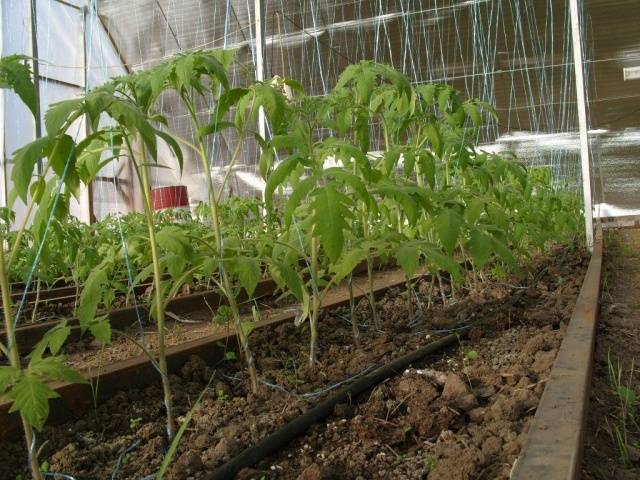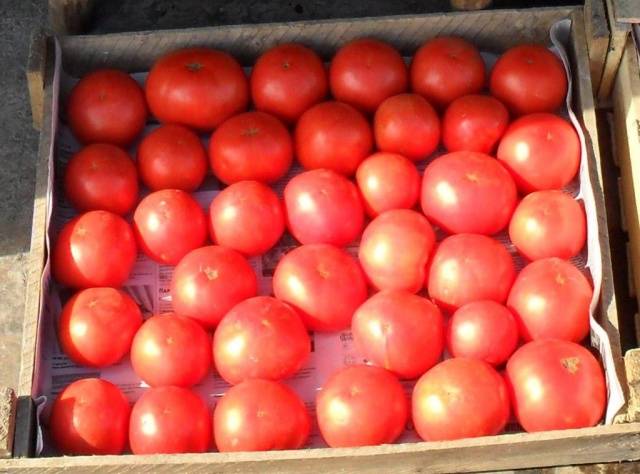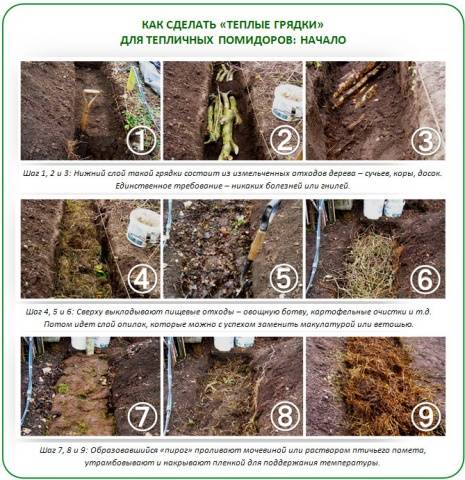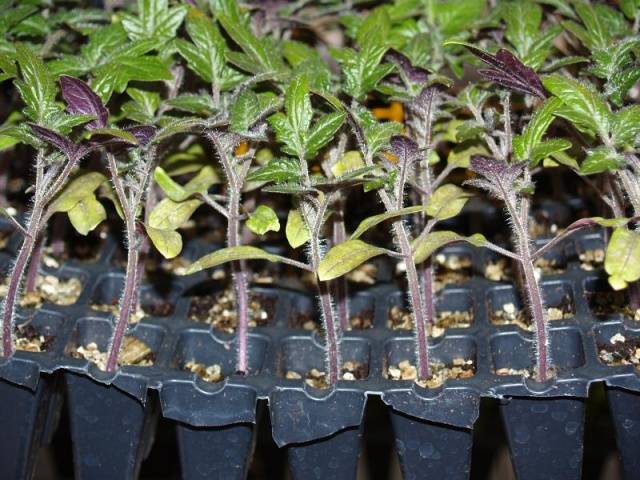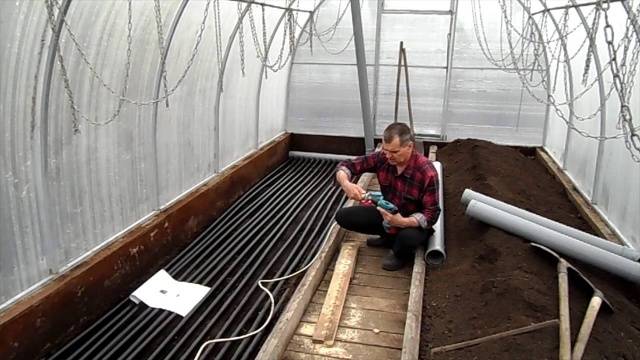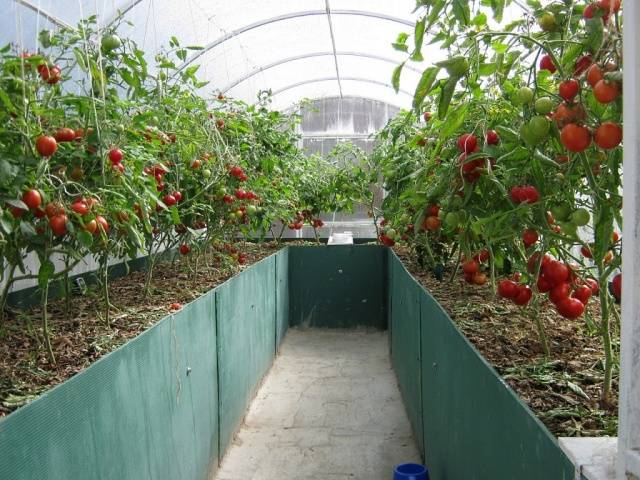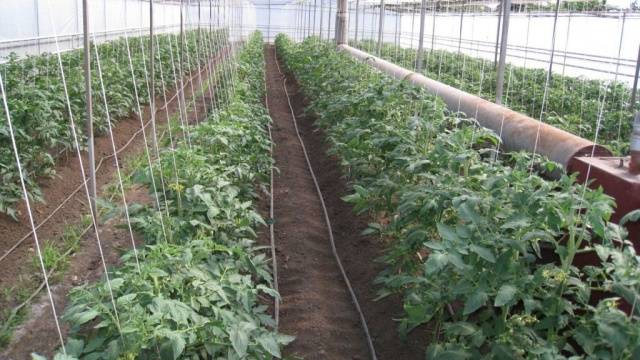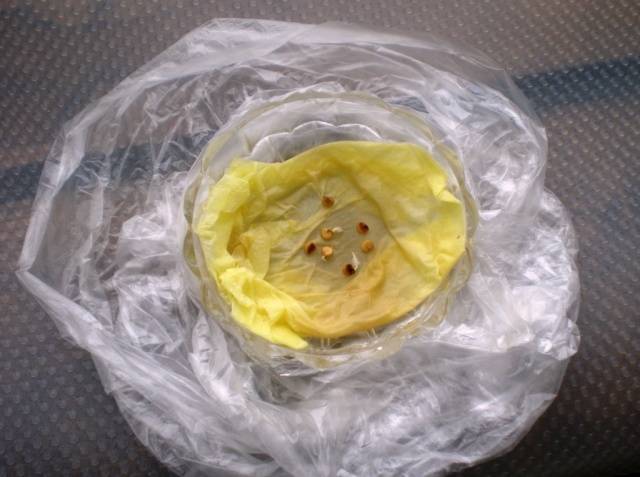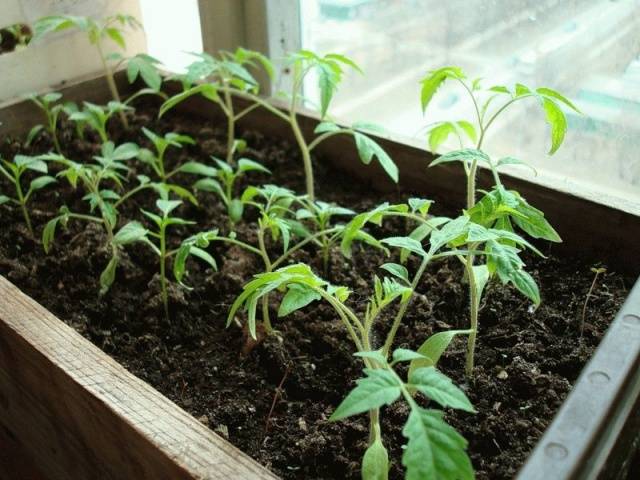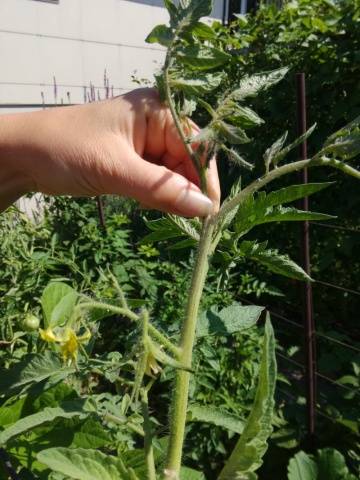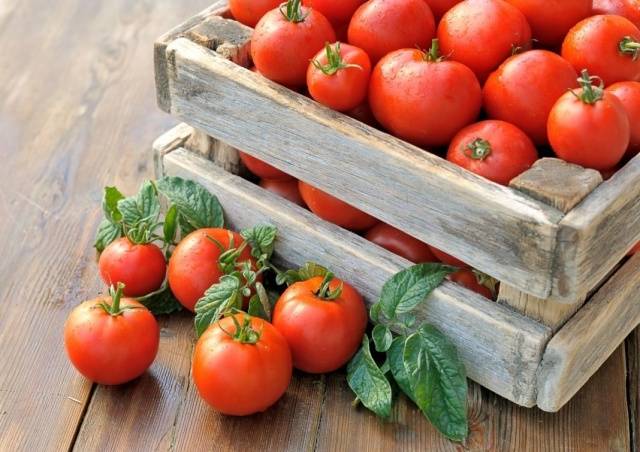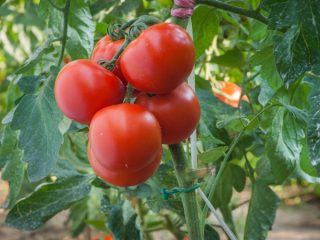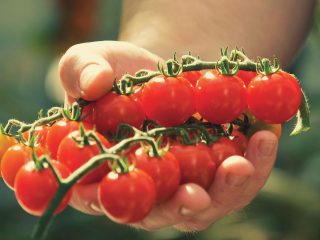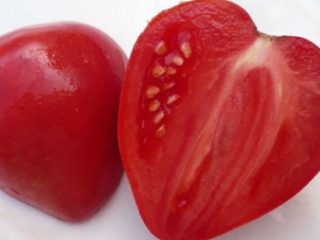Content
Many people think that fresh tomatoes in Siberia are exotic. However, modern agricultural technology allows you to grow tomatoes even in such harsh climatic conditions and get good yields. Of course, planting tomatoes in the northern regions has its own characteristics, the gardener must know a number of rules and clearly follow the instructions for growing tomatoes in Siberia. But in the end, the agrarian will receive a decent harvest of tomato, which may in no way be inferior in quality and quantity to the harvest of a summer resident from central Russia.
This article will focus on the rules for growing tomatoes in cold climates: choosing a variety, preparing seedlings, methods of planting in a greenhouse, as well as the timing in which tomato seedlings should be planted in the ground.
How to choose tomatoes for Siberia
Today, choosing a tomato variety suitable for each region will not be difficult - a lot of varieties and varieties of tomatoes have been bred, specially acclimatized for specific weather conditions.
Seeds of special Siberian varieties cost a lot, so you need to handle the planting material carefully and skillfully. Generally, the requirements for tomatoes for Siberia are as follows:
- Early maturity. It is better to choose ultra-early or super-early varieties of tomatoes, but, in no case, not late-ripening tomatoes with a long growing season. The fact is that summer in the northern regions comes very late - frosts do not recede for a long time, and autumn, in turn, begins too early - in September there may already be full-fledged frosts. Not all tomato varieties have such a short growing season; only very early tomato varieties will be able to ripen in a short summer.
- Low temperature resistance should also be present in the list of qualities of a Siberian tomato, because the probability of frosts (both spring and autumn) is very high.
- Ability to withstand high temperatures... Siberia is a region with huge temperature jumps: in summer it can be up to 40 degrees Celsius, and in winter down to -40 degrees - frost, moreover, night temperatures are often very different from daytime ones - 10 and 40 degrees, respectively. Not all tomato varieties are able to withstand such temperature fluctuations, so you need to choose a tomato variety that is not only cold-resistant, but also capable of withstanding the heat.
- High yield is also one of the main requirements for Siberian tomato varieties. In this case, it is better to focus on quality rather than quantity: it will be easier for a gardener to build a small greenhouse and plant a couple of dozen tomato bushes there than to provide the necessary conditions for an entire tomato plantation.
- Purpose of fruits It is also better to determine right away: whether the summer resident needs tomatoes for canning, or he plans to make juice from tomatoes, or the family just needs fresh vegetables in the summer. Since most varieties of tomatoes have a universal purpose, it is better to choose one of them so that there are no surprises later.
It is also worth paying attention to the method of pollination of tomatoes - self-pollinated tomatoes are most suitable for greenhouses, which do not need insects or human help.
Where are Siberian tomatoes grown?
Oddly enough, the climate in different parts of Siberia can differ significantly: if in Miusinsk summer residents grow vegetables right on their plots, then in cold Norilsk not every greenhouse can provide a gardener with a good harvest of thermophilic tomatoes.
So, decide on the way growing tomatoes in Siberia analysis of the weather conditions of a particular region will help. If a stable heat on the site occurs already in mid-May, and summer lasts until mid-September, then it is quite possible to plant tomato seedlings directly on the beds. Of course, in the first weeks after planting, you will have to monitor the night temperatures and, probably, cover the seedlings with foil.
But in more northern regions, where the heat comes only in June, and already in August heavy rains and morning fogs begin, tender tomatoes simply will not survive in the open field: the fruits will not have time to ripen, the plants will be threatened with late blight and rot. There is only one way out - to plant tomato seedlings in greenhouses or hotbeds.
As you know, greenhouses are also different:
- film;
- glass;
- polycarbonate;
- built on a foundation or simply on the ground;
- with ground heating or with air heating.
All these factors are important, but each gardener must independently choose the appropriate type of greenhouse, taking into account the climate in his area, the location of the site (if it is a lowland, for example, then the threat of frost and fog is more significant) and, of course, his material capabilities.
Undoubtedly cultivation of tomatoes in greenhouses is more productive. This way you can avoid a lot of surprises and save the tomato harvest as much as possible. That is why most Siberian gardeners prefer to plant tomato seedlings in greenhouses or small greenhouses: those who grow tomatoes only for themselves and those who sell vegetables do this.
When to plant tomatoes in a greenhouse in Siberia
Unfortunately, there is no clear date for planting tomatoes in greenhouses. The timing of planting a tomato can be determined by taking into account a number of factors, such as:
- weather;
- observations of the climate in previous years;
- tomato variety;
- the recommended planting dates indicated on the seed bag;
- the state of the seedlings at a certain moment;
- soil temperature in the greenhouse.
In general, there is only one thing to say - if the temperature of the soil in which the tomatoes are planted remains below 15 degrees, the plants will not develop. Simply put, a gardener can plant tomato seedlings earlier, but this will not give any results if the ground is still too cold - he will not get an early tomato harvest.
How to warm the ground for tomatoes
It turns out that the main task of summer residents of Siberia is to provide seedlings with warm soil as soon as possible. This can be done in many ways, the most common methods today are:
- Artificial heating of the ground using energy sources: electric shadows located underground, a pipeline with hot water and other methods. Such methods are very effective, but they require the use of energy resources, and today such a pleasure is not cheap at all.
- A more economical way is to heat the soil with organic matter. In practice, it looks like this: the soil is removed from the garden bed and organic substances, such as compost, straw, cow dung, humus, are placed on the bottom of the formed trench. The main condition is for organic matter to be in a state of decay. Then the fermentation process will contribute to the release of heat, which is required to heat the land in the garden. From above, rotting organic matter must be covered with a thick layer of soil, otherwise the tomatoes will simply burn alive.
There are several ways to raise a bed of tomatoes, most often summer residents use one of the following methods:
- planting tomato seedlings in wooden boxes. Such a box must be prepared in the fall, stock up on the necessary amount of nutrient soil for the required volume, dig up the soil and fertilize it. And in the spring, the earth is disinfected, loosened and removed from the boxes. Instead of soil, on the bottom of the container, they place waste organic matter (compost, humus or manure), tamp it well and cover it with a thick layer of earth on top. Now you can plant seedlings - the roots of the tomato will be warm enough while the organic material rots and decomposes.
- High beds can also be a solution for those regions where the threat of frost lasts until June.
To build such a bed, you will need an additional substrate for tomatoes. The dry substrate must be poured with a mound on the main bed, the height of the embankment is about 15-20 cm. Tomato seedlings must be planted in this bulk soil, as the tomato roots grow, they will still germinate on the main bed, and while the tomato plants are young, they will be warm and comfortable in the embankment.
These are not all methods, many summer residents use planting tomatoes in tubs or large pots, buckets, someone successfully uses bags with a special nutrient mixture for this, methods of growing vegetables in water with dissolved fertilizers are also known.
Secrets of Siberian gardeners
In addition to heating the ground in the greenhouse, summer residents and gardeners of Siberia know a few more tricks that help them grow a good tomato crop:
- Use only prepared and hardened seeds for sowing.... You can harden tomato seeds in a regular refrigerator, but before that they must go through several stages. First of all, the planting material is placed in warm water for 10-12 hours so that the water temperature does not drop, you can use a thermos. Then the tomato seeds are washed with cool water and dipped in a potassium permanganate solution for half an hour for disinfection. You can feed tomato seeds with a solution of wood ash, sodium humate or nitrophoska. After that, they need to be placed on a damp cloth and placed in a warm place. When the first seed hatches, the saucer with tomato seeds is placed in the refrigerator (it is better to use the zero chamber). Here they are hardened for two to three days. Only then can tomato seeds be sown for seedlings.
- Siberians grow tomato seedlings in low boxes, the soil layer in which is no more than three centimeters. This is necessary in order for tomato seedlings to have a well-branched root system, and not go deep into the beds. This is due to the fact that at depth the earth warms up for a very long time, while on the surface the soil, even in Siberia, will become quite warm in May.
- When diving, the roots of tomato seedlings need to be pinched... Gardeners at this stage remove half of the central root, which can be easily recognized, since it is the longest. It also promotes the branching of the tomato root system, which allows the seedlings to be planted earlier.
- Tomato seeds are sown for seedlings in late March or early Aprilso that the seedlings have time to gain sufficient mass and not stretch too much.
- When planting tomatoes, even in open ground, even in a greenhouse, summer residents of Siberia try to choose only undersized varieties, since they are more resistant to low temperatures, and at the same time they are able to survive extreme heat. Indeterminate varieties of tomatoes are more demanding and delicate, they need stable heat, in addition, such bushes will have to be constantly pinned and tied up.
- During the fogs (in most of Siberia, they begin in August) tomatoes planted in open ground must be protected at least from above. For this, the beds with tomatoes are covered with a polyethylene canopy.
- Tomato greenhouses can be temporary, as the seedlings grow and the likelihood of frost decreases, the sides of the greenhouse can be dismantled or all the vents and doors in the greenhouse can be opened. This measure is necessary for maximum ventilation of plants, since greenhouse tomatoes in Siberia often suffer from late blight, after all, it is quite difficult to adjust temperature and humidity in these conditions.
- For normal development, tomatoes need regular watering and repeated fertilization.... The first time you need to water and feed the seedlings no earlier than 10 days after transplanting. After that, watering is repeated as the soil dries up, and tomatoes are fed at each stage of their development: during the period of growing green mass, during the flowering period and at the stage of fruit ripening. Only organic fertilizers (manure, chicken droppings, humus) can be used for tomatoes.
- So that the fruits have time to ripen, no more than seven ovaries should be left on each tomato bush. The rest of the ovaries are simply removed by pinching the shoots.
- If frosts or late blight does not allow the fruits to ripen, large and medium-sized tomatoes can be picked green and placed in a warm and lighted place... There tomatoes will ripen quietly within 1-2 weeks.
findings
There are no exact recommendations in determining the date of planting tomatoes in Siberia. The gardener must independently analyze such important factors as the weather, the characteristics of the region, the location of the site, the type of greenhouse, the method of growing tomatoes and their variety. One thing is for sure - tomato seedlings should be prepared as much as possible for the harsh features of the north, so they need to be hardened and treated with fungicidal preparations at all stages of development.
